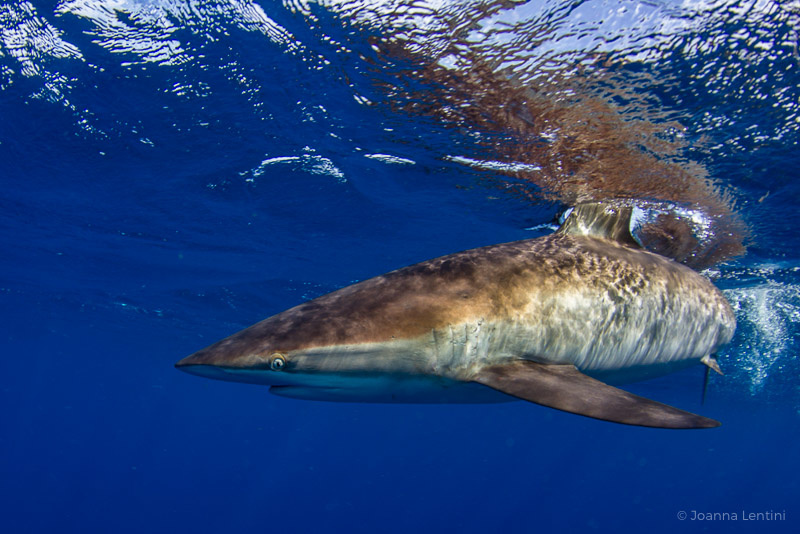There is a tremendous amount of magic hiding just below the surface of our lakes, rivers, and seas that has yet to be documented. And while underwater photography certainly has a few barriers to entry, if approached in a pragmatic way the initial shift can be quite simple. Let’s dive in.
Dive Certifications
Try to forget the notion that you need to be a certified scuba diver to be an underwater photographer. While becoming a certified diver can open the door to many more photographic possibilities, there is no reason to jump in headfirst if you are not sure it’s something you want to seriously pursue. Many of the published underwater images we see are either taken at the surface or within a few feet of it with the use of a simple mask, snorkel, and fins.
Oftentimes, underwater photographers find themselves limited by all of the scuba gear, opting for a more fluid state, while other times the surface is simply where the action can be found. Whether you’re straddling the water's edge to capture an over-under image or freediving down a few feet to catch the reflection of a marine mammal on the surface, there are many opportunities for creating underwater images without any scuba knowledge.
Besides, many divers and guides often frown upon bringing a camera system with you until you have between 50 to 100 dives. While it’s not a rule, learning to maintain good buoyancy without the distraction of a camera ensures the protection of coral reefs and your personal safety.
Costs and Equipment
Even the purchase of an underwater housing is not mandatory. So many cameras, including smartphones, are capable of being taken to various depths without a housing, or with a relatively inexpensive one. As photographers, we can sometimes get caught up in the pursuit of new gear, but when it comes down to it, underwater photography does not have to be complicated or all that more expensive than any other genre of photography. Keeping things simple when you are exploring anything new is not a bad policy to have. If you are keen to start off with a housing for a camera that can't be submerged there are many places online where you can find used housings.
Swimming
Now that we’ve cleared up the matter of diving, let’s talk about another rather obvious concern: swimming abilities. OK, surely being a decent swimmer is a good idea for safety reasons, and especially useful if you’d like to keep pace (sans harassing) with swift moving marine life. However, this does not necessarily apply in all cases. For instance, photographers in colder regions sometimes opt for a pole cam or some other contraption for some of their underwater work, which of course can be used in any climate, while other images can be made while wading knee to waist deep. Get creative with the traditional approach to shooting underwater. If you can swim, learning how to safely freedive is also a great option. Freediving courses can help take you from the surface to even deeper depths than some scuba divers, devoid of all the restricting gear.
Landlocked
Limited access to the ocean should not keep you from exploring other waterways such as lakes, rivers, and streams in your region. If you already shoot wildlife or landscapes, getting into the underwater photographer's mindset can help expand your repertoire. There are the many species of freshwater fish and mammals to photograph in the water, but don’t forget about creative over-under shots of people, such as fishermen, kayakers, and kite-surfers.
Final Word
As an underwater photographer I have spent many years working on my skills and dive certifications, but lately I have found myself and my camera at the surface, tank-less and strobe-less. I tend to prefer the natural light, marine life interactions, and ease on my body in this space. From a photographic perspective there really is so much to explore where the terrestrial and aquatic worlds collide, and it doesn’t have to be expensive or difficult.








I agree freediving is a great way to start shooting underwater, and starting with a simple waterproof camera like an Olympus TG-5, Fuji FinePix XP80, or Nikon COOLPIX W300 and you can get quite a lot of good pics if you go out to a decent snorkeling reef. All these camera are well rated to snorkeling depths.
I don't agree that "the surface is simply where the action can be found", sure there's great stuff to shoot within the first 15-30 feet, but some things you just need to go down for. I think if someone has spent enough time snorkeling with one of the aforementioned cameras, they'll be able to feel out better if they want to consider dive certification, proper training to maintain good buoyancy, et al, and investing in more sophisticated gear. Underwater photography skills certainly don't happen overnight. There's some UW photography courses as well people can opt for that teach underwater photography if they do decide to become divers.
Thanks for your feedback and recommendations. Re the bit about the action at the surface, I didn’t mean to dismiss the ample opportunities deeper down, but wanted to highlight the opportunities available in the snorkel zone!